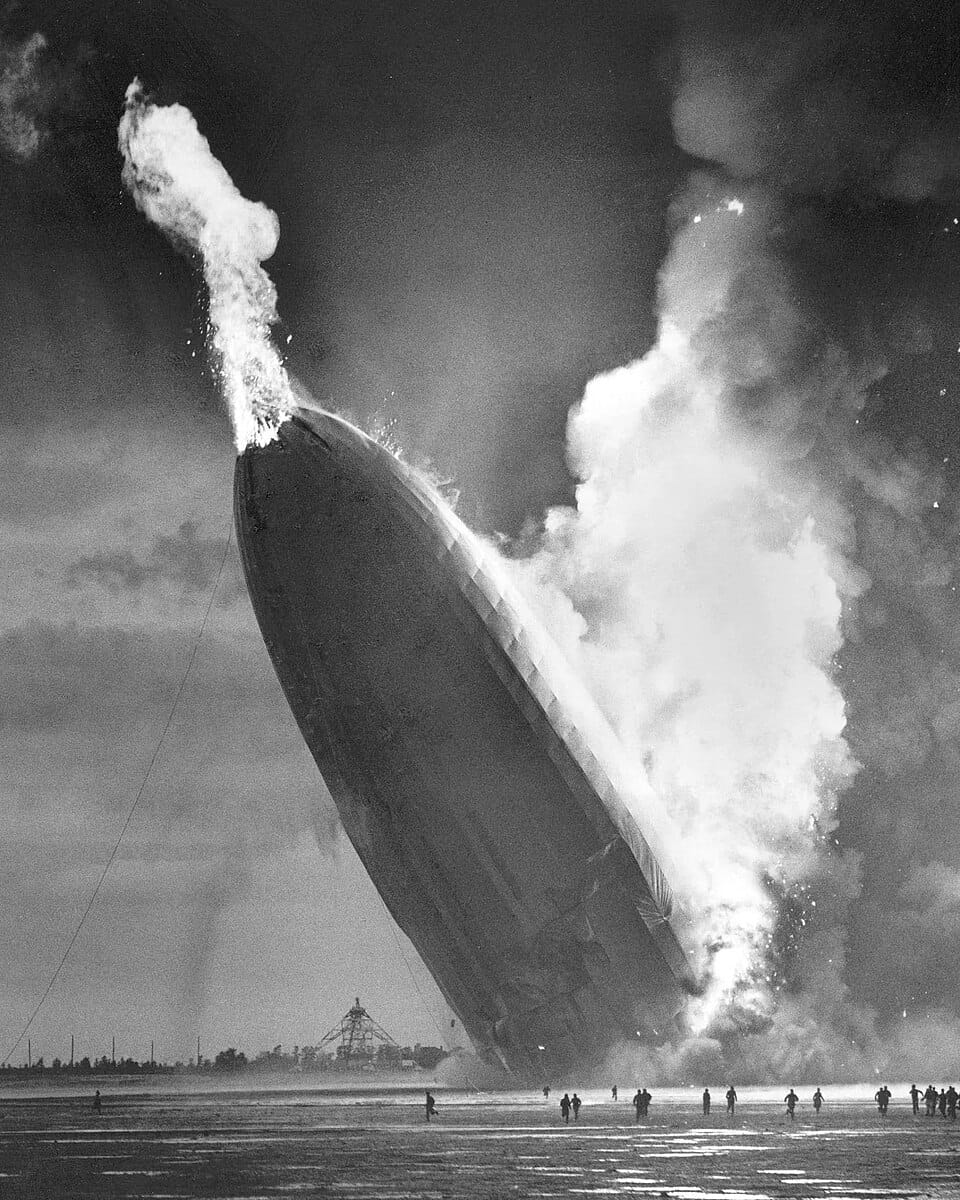zeppelin

Zeppelin, meaning a dirigible airship, comes, of course, from the name of Ferdinand Adolf Heinrich August Graf von Zeppelin (1838–1917), who designed such airships. Ironically, the word appears in English before it does in German. English use as an adjective referring to such airships dates to 1896, while the German Luftschiff Zeppelin isn’t recorded until 1904.
Ferdinand Zeppelin published the designs for his airship in 1893 and patented them two years later. His first airship took flight in 1900. But there was considerable pre-launch hype. The earliest use of the adjective zeppelin that I’m aware of appears in the Boston Daily Advertiser on 12 February 1896, a reference to the count’s proposed flying machine:
Dr. Helmholtz had already pronounced favorably upon the Zeppelin flying machine some time before the specialist’s death; and even the Kaiser, it is reported, has now begun to take an interest in the device submitted by the Wurtemburg [sic] inventor.
As yet the accounts of the new flying machine are not very explicit. It is stated, however, that the Zeppelin air-ship is a cigar-shaped vessel, which can be steered upward and downward, right and left, forward and backward, under practically every condition presented by the atmosphere within a distance of three and a half miles from the surface of the earth.
The noun zeppelin is in place in the opening years of the next century when it appears in the pages of the Baltimore American on 6 August 1908:
Walter Wellman, who planned recently about going to the North Pole in a dirigible balloon, said last night that he was planning to make the attempt next year. He said his airship, the America, built for polar atmospheric conditions, could easily travel from New York to Buffalo, Detroit, or even Chicago. It is, Mr. Wellman said, the second largest airship ever built. Its 200,000 cubic feet being exceeded only by the Zeppelin.
“But in fuel-carrying capacity and radius of action the America exceeds the Zeppelin,” continued Mr. Wellman.
The Oxford English Dictionary also has a 1908 quotation for the noun zeppelin from H. G. Wells’s novel The War in the Air, but Wells is using it as a proper name for a particular airship, the Graf Zeppelin. (Wells’s airship is fictional; the first real airship named Graf Zeppelin took to the air in 1927.)
Cf. airship, blimp, dirigible.
Sources:
“An Air Ship.” Boston Daily Advertiser (Massachusetts), 12 February 1896, 4/4. Readex: America’s Historical Newspapers.
“By Balloon to the Pole” (5 August 1908). Baltimore American (Maryland), 6 August 1908, 9/4. Readex: America’s Historical Newspapers.
Oxford English Dictionary Online, June 2014, s.v. Zeppelin, n.
Wells, H. G. The War in the Air. London: George Bell and Sons, 1908, 235, 258. HathiTrust Digital Archive.
Photo credit: Murray Becker / Associated Press, 1937. Wikimedia Commons. Public domain photo.